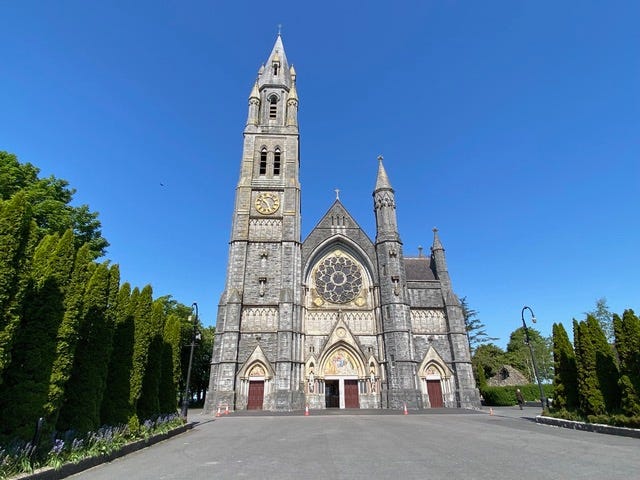Why Roscommon Was the Highlight of Our Ireland Trip
An overlooked county full of castles, myths, and unspoiled charm.
Yesterday, we looked at two smart base towns for exploring Ireland—places that keep you close to the highlights while saving money and hassle. But some of the most rewarding discoveries come when you step even further off the beaten path. That’s how we ended up in County Roscommon, right in the heart of Ireland.
At first glance, Roscommon isn’t on many travelers’ must-see lists. It doesn’t have the tourist buzz of Galway or the coastal drama of Kerry. But that’s exactly what makes it so compelling. From ancient castles and famine history to myths of warrior queens, Roscommon turned out to be the most surprising highlight of our trip.
Here’s why Jim thinks it deserves a spot on your list too…
When visiting Ireland, there’s a tendency to focus on the coastal areas. Places like the Cliffs of Moher, Galway, the Ring of Kerry, Dingle, and Waterford are commonly found on must-see lists. But thanks to my wife’s genealogy search, we found ourselves appreciating some uncommon destinations right in the heart of Ireland—County Roscommon.
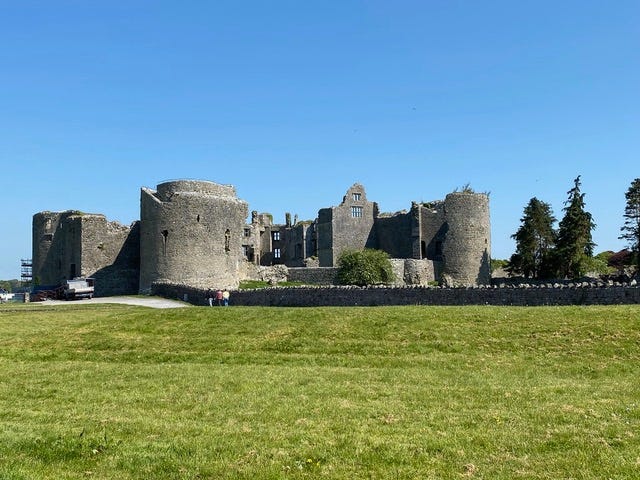
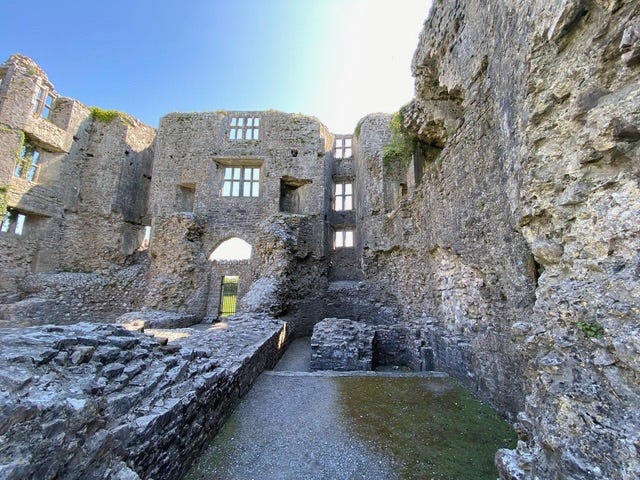
County Roscommon is interesting in many ways. Although it is the 11th largest of Ireland's 32 counties, it ranks only 26th in population. Being so sparsely populated, driving through the county is a pastoral experience, where you’ll see rolling green fields, remains of ancient stone castles and ring forts, and more sheep than people. Perhaps it’s no coincidence that the life expectancy of its residents is the highest in all of Ireland.
We stayed in the Abbey Hotel in the county town of Roscommon, which was a wonderful find in itself. The hotel looks like a small castle from the outside, and inside it has a spa, a banquet hall, and an excellent restaurant and bar. It gets its name from the ruins of Roscommon Abbey just behind the hotel. The ruins include the tomb of Felim O’Conor, a king of Connacht who died in 1265.
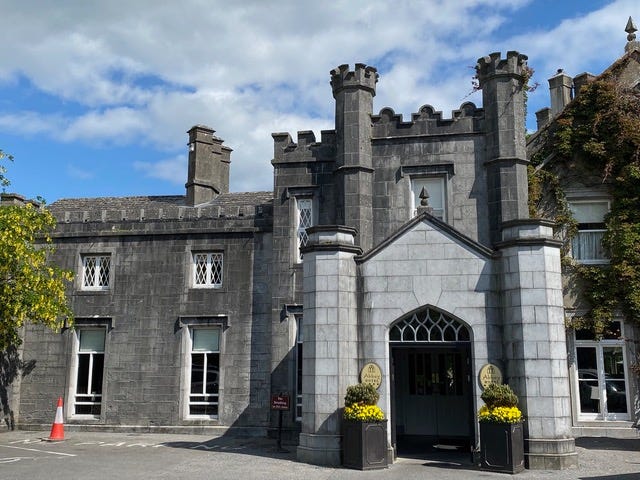
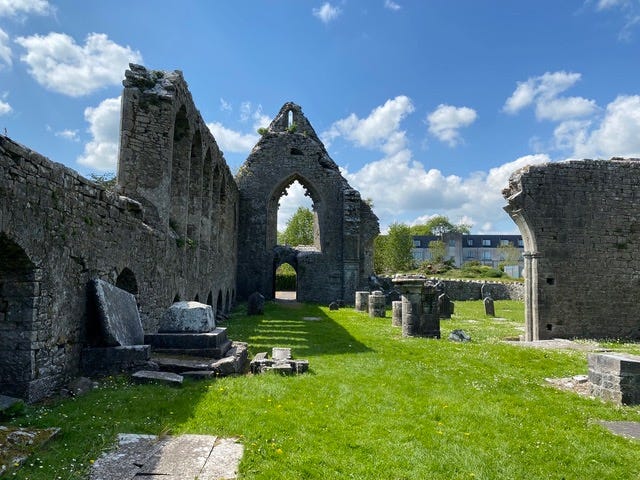
We soon discovered that this closeness to history really defines the area, and makes a visit to County Roscommon something very special. Let’s look at some of the many attractions we found, and why our time in Roscommon was the favorite part of our exploration of Ireland.
Roscommon Town
The town itself is a delight. The downtown area is very walkable, with many fine restaurants and pubs. Brightly painted alleys lead to pedestrian shopping streets. If you enjoy the art and architecture of old cathedrals, the imposing Roman Catholic Sacred Heart Church is a Gothic Revival beauty in rock and sandstone, with striking tile mural displays.
Just a short walk away is Loughnaneane Park. It covers 14 acres with walking trails, a dog park, a wildlife area, and wooden sculptures of Gaelic heroes, including Queen Maeve (whom we will learn more about shortly). Plenty of benches and shade trees make it inviting, but the highlight for us was the ruins of Roscommon Castle.
More than 700 years old, the castle was one of the most impressive ruins we saw in all of Ireland. There is no entry fee to the park or the castle. We were free to wander around with hardly anyone else in sight, except a few locals enjoying the park.
Roscommon is doing its best to attract more visitors, hosting several festivals each year. But looking over a list of coming events at the local library, I could see that most of them were aimed at locals—farmer’s markets, sheep-shearing contests, and the like.
Strokestown
Our search for family records also took us to Strokestown in County Roscommon. It’s a small village of fewer than 1,000 people, but with significant history attached. Here you’ll find the Strokestown Park House and Gardens, which also houses the National Famine Museum.
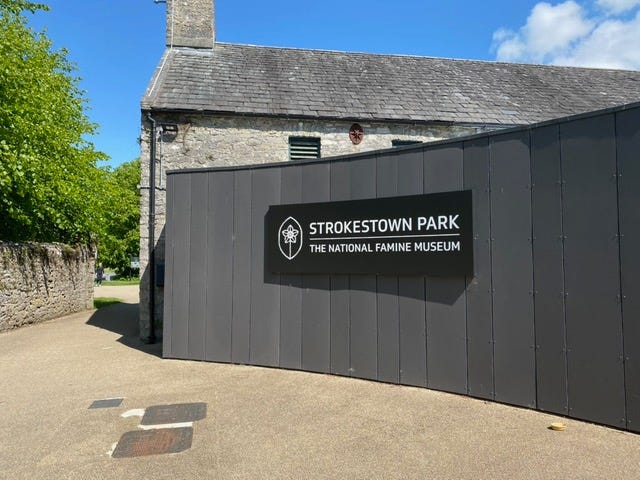
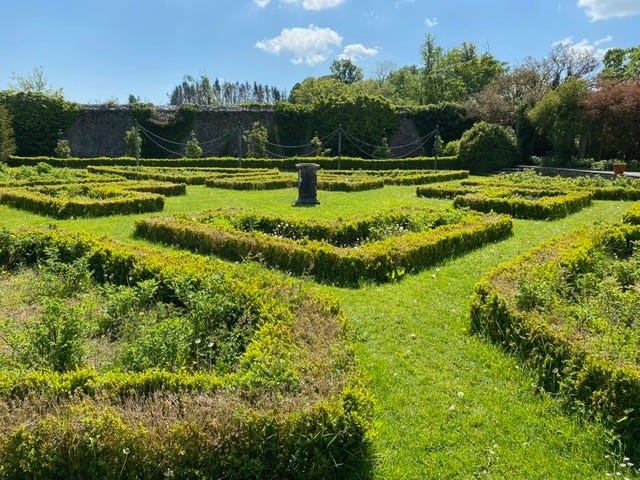
The National Famine Way begins in the park. Visitors can walk or cycle along the path taken by those fleeing the Great Famine. The English landowning Mahon family decided it was cheaper to ship their laborers off to America than to feed them. The tenants had to walk the 100 miles from the manor house to Dublin, where they boarded the so-called “coffin ships” because so many died during the voyages.
You can get the whole story in the Famine Museum, where my wife actually found her family name on some of the ship manifests. The exhibits give a detailed look at life in Ireland during that troubled time, and explain why the famine struck the country so severely.
You can also tour the grand Mahon home and see the sharp contrast between the lives of English landowners and Irish tenant farmers. If that feels a bit heavy, the park gardens offer a fragrant, peaceful alternative. There’s a small restaurant, too, and during our visit local musicians were performing Irish ballads for diners.
Tulsk / Rathcrohan
Perhaps the best place to get a sense of the deep history of County Roscommon is the Heritage Center in the village of Tulsk. Here we saw the wire sculpture of the Connacht Bull and learned more about the lore of Queen Maeve.
It’s uncertain whether Queen Maeve was a historical figure or a legend, though references place her around 2,000 years ago. She is described as a warrior noted for strength, resilience, and—at times—ruthlessness. Her name is said to mean “intoxicating,” and she is believed to have reigned for some 60 years.
A daughter of the High King of Ireland, she was appointed to the throne by her father and married King Conchobar of Ulster. The marriage was troubled, with her jealousy leading to the murder of her sister.
Maeve’s best-known story is the “Cattle Raid of Cooley.” The tale begins with a discussion with her husband, Aillil, about wealth. Their holdings were similar, except Aillil had a great black bull. Determined to acquire one for herself, Maeve set out to claim a brown bull. When negotiations failed, she led a bloody campaign for it. Although ultimately defeated, she still managed to seize the bull.
Just a few kilometers from the Heritage Center lies Rathcrohan, the burial site of the kings of Connacht. Covering 1,280 acres, it contains more than 20 ring forts, burial mounds, and megalithic tombs.
We followed directions through a special gate and climbed a hill in a field full of sheep. From the top, we had a commanding view of the countryside. I must admit, though, my eyes couldn’t pick out burial mounds or megaliths—only the emerald green hills of Roscommon rolling away in every direction.
From Rathcrohan, a trail runs about 25 miles across Roscommon, tracing Maeve’s path to the Cooley Peninsula and back. By bike or car, you can pass more than 200 archaeological sites, including 60 National Monuments, and even a cave said to be a gateway to Hell.
Final Thoughts
If you want to explore Ireland’s deep history while avoiding crowds and over-tourism, County Roscommon is a jewel in the country’s heart. With its castles, legends, and living traditions, it’s a place where past and present mingle, and where even a casual visit can become the highlight of a trip to Ireland.
— Jim Santos, IL Roving Correspondent
Editor’s note: If Ireland is on your radar, there’s one season that captures its magic more than any other. Fall brings fiery colors to the countryside, cozy evenings by the fire, and festivals filled with music and laughter. It’s also one of the best-value times to visit, when crowds thin and the country feels even more welcoming.
Don’t miss our full feature on why this is the perfect season to plan your trip: 5 Reasons to Visit Ireland in Fall



